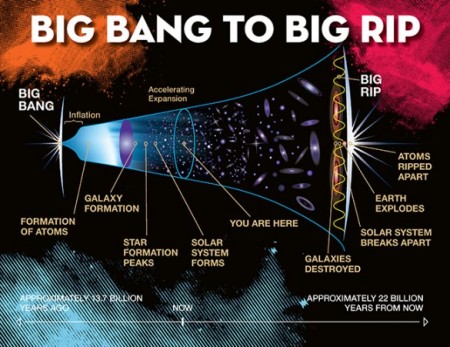July 4, 2015 – To all my American readers a happy 4th of July. As a researcher bent on understanding the future and where humanity is going I seldom think about this within a cosmological context. But there are a whole bunch of people who called cosmologists and they have given us the Big Bang, the expanding Universe, and the big physics that governs how it all works.
So when a mathematics and physics team at Vanderbilt University questions what the future of the Universe will be, lots of folks of a scientific bent sit up and take notice. Apparently the team has calculated a very different future for our Universe which current thinking has expanding forever with eventually a cold dark fate called the “Big Freeze.” They call it the “Big Rip.” Their paper, “New approach to cosmological bulk viscosity,” appears in the journal Physical Review D.
When we think of viscosity we picture liquids and by their density, pipe diameter, angle of descent – a rate of flow. But cosmological viscosity is “bulk viscosity” which measures the resistance of fluids to expansion and contraction. In our daily life we seldom encounter “bulk viscosity.” But in the Universe which is subject to all kinds physics seldom encountered here on Earth.
The discovery of the expansion of the Universe at ever accelerating rates was only made in the 1990s. The explanation cosmologists came up with was an unknown force called “Dark Energy.” But we have no proof that “Dark Energy” exists. The Vanderbilt team in their research are convinced that “bulk viscosity” explains the acceleration not “Dark Energy.”
The “Big Freeze” theory of the end of the Universe was projected out 100 trillion years. The theory the Vanderbilt team proposes, the “Big Rip” is expected much sooner – a mere 22 billion years into the future. In the “Big Rip” expansion of the Universe causes matter to disassemble to a point that even atoms fall apart leaving just elementary particles and radiation.
Any way you look at it from our historical perspective, Canada turning 148 on July 1st and the United States now 239 today, 22 billion to 100 trillion years gives us a bit of time to figure out which it is, “Big Freeze” or “Big Rip.”


















